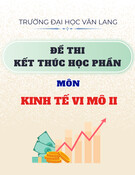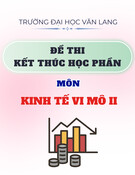
Chapter 16
Monopolistic Competition
TRUE/FALSE
1. The "competition" in monopolistically competitive markets is most likely a result of having many sellers in
the market.
ANS: T DIF: 1 REF: 16-1 NAT: Analytic
LOC: Monopolistic competition TOP: Monopolistic competition
MSC: Interpretive
2. The "monopoly" in monopolistically competitive markets is most likely a result of firms having some pricing
power due to product differentiation.
ANS: T DIF: 1 REF: 16-1 NAT: Analytic
LOC: Monopolistic competition TOP: Monopolistic competition
MSC: Interpretive
3. Monopolistic competition is characterized by many buyers and sellers, product differentiation, and free entry.
ANS: T DIF: 1 REF: 16-1 NAT: Analytic
LOC: Monopolistic competition TOP: Monopolistic competition
MSC: Definitional
4. Monopolistic competition is characterized by many buyers and sellers, product differentiation, and barriers to
entry.
ANS: F DIF: 1 REF: 16-1 NAT: Analytic
LOC: Monopolistic competition TOP: Monopolistic competition
MSC: Definitional
5. A monopolistically competitive market is characterized by barriers to entry.
ANS: F DIF: 1 REF: 16-1 NAT: Analytic
LOC: Monopolistic competition TOP: Monopolistic competition
MSC: Interpretive
6. Monopolistic competition is the only market structure that features many sellers.
ANS: F DIF: 1 REF: 16-1 NAT: Analytic
LOC: Monopolistic competition TOP: Markets MSC: Interpretive
7. Product differentiation always leads to some measure of market power.
ANS: T DIF: 2 REF: 16-1 NAT: Analytic
LOC: Monopolistic competition TOP: Demand curve
MSC: Interpretive
8. Oligopoly is characterized by a few sellers offering similar products, whereas monopolistic competition is
characterized by many sellers offering differentiated products.
ANS: T DIF: 2 REF: 16-1 NAT: Analytic
LOC: Monopolistic competition TOP: Monopolistic competition
MSC: Definitional
9. Monopolistic competition is characterized by a few sellers offering similar products, whereas oligopoly is
characterized by many sellers offering differentiated products.
ANS: F DIF: 2 REF: 16-1 NAT: Analytic
LOC: Monopolistic competition TOP: Monopolistic competition
MSC: Definitional
54

55 Chapter 16/Monopolistic Competition
10. Oligopoly and monopolistic competition are examples of a market structure called imperfect competition.
ANS: T DIF: 1 REF: 16-1 NAT: Analytic
LOC: Monopolistic competition TOP: Monopolistic competition
MSC: Definitional
11. Monopolistic competition and monopoly are examples of a market structure called imperfect competition.
ANS: F DIF: 1 REF: 16-1 NAT: Analytic
LOC: Monopolistic competition TOP: Monopolistic competition
MSC: Definitional
12. A markup of price over marginal cost is inconsistent with free entry and zero profit.
ANS: F DIF: 2 REF: 16-2 NAT: Analytic
LOC: Monopolistic competition TOP: Profit maximization
MSC: Interpretive
13. Monopolistically competitive firms, like monopoly firms, maximize their profits by charging a price that
exceeds marginal cost.
ANS: T DIF: 2 REF: 16-2 NAT: Analytic
LOC: Monopolistic competition TOP: Profit maximization
MSC: Interpretive
14. A profit-maximizing firm in a monopolistically competitive market charges a price equal to marginal cost.
ANS: F DIF: 2 REF: 16-2 NAT: Analytic
LOC: Monopolistic competition TOP: Profit maximization
MSC: Interpretive
15. A profit-maximizing firm in a monopolistically competitive market always operates on the downward-sloping
portion of its marginal cost curve.
ANS: F DIF: 2 REF: 16-2 NAT: Analytic
LOC: Monopolistic competition TOP: Profit maximization
MSC: Analytical
16. For a profit-maximizing firm in a monopolistically competitive market, when price is equal to average total
cost, price must lie above marginal cost.
ANS: T DIF: 2 REF: 16-2 NAT: Analytic
LOC: Monopolistic competition TOP: Profit maximization
MSC: Analytical
17. A profit-maximizing firm in a monopolistically competitive market can earn positive, negative, or zero profits
in the short run.
ANS: T DIF: 2 REF: 16-2 NAT: Analytic
LOC: Monopolistic competition TOP: Short-run equilibrium
MSC: Interpretive
18. A firm in a monopolistically competitive market can earn both short-run and long-run profits.
ANS: F DIF: 2 REF: 16-2 NAT: Analytic
LOC: Monopolistic competition TOP: Short-run equilibrium | Long-run equilibrium
MSC: Interpretive
19. A firm in a monopolistically competitive market can earn short-run profits but not long-run profits.
ANS: T DIF: 2 REF: 16-2 NAT: Analytic
LOC: Monopolistic competition TOP: Short-run equilibrium | Long-run equilibrium
MSC: Interpretive
20. In the long run, monopolistically competitive firms produce where demand equals marginal cost.
ANS: F DIF: 2 REF: 16-2 NAT: Analytic
LOC: Monopolistic competition TOP: Long-run equilibrium
MSC: Analytical

Chapter 16/Monopolistic Competition 56
21. When a firm in a monopolistically competitive market earns zero economic profit, its product price must equal
marginal cost.
ANS: F DIF: 2 REF: 16-2 NAT: Analytic
LOC: Monopolistic competition TOP: Long-run equilibrium
MSC: Interpretive
22. In the long run, monopolistically competitive firms produce where demand equals average total cost.
ANS: T DIF: 2 REF: 16-2 NAT: Analytic
LOC: Monopolistic competition TOP: Long-run equilibrium
MSC: Analytical
23. In a monopolistically competitive market, the number of firms adjusts until economic profits are driven to
zero.
ANS: T DIF: 1 REF: 16-2 NAT: Analytic
LOC: Monopolistic competition TOP: Long-run equilibrium
MSC: Interpretive
24. When a profit-maximizing firm in a monopolistically competitive market is in long-run equilibrium, marginal
cost must lie below average total cost.
ANS: T DIF: 2 REF: 16-2 NAT: Analytic
LOC: Monopolistic competition TOP: Long-run equilibrium
MSC: Analytical
25. In a monopolistically competitive market, the demand curves faced by incumbent firms are unaffected by the
entry of new firms into the market.
ANS: F DIF: 2 REF: 16-2 NAT: Analytic
LOC: Monopolistic competition TOP: Demand curve | Long-run equilibrium
MSC: Interpretive
26. A firm in a monopolistically competitive market is usually indifferent to an additional customer walking
through the door, since a sale to that customer will not increase the firm's profit.
ANS: F DIF: 2 REF: 16-2 NAT: Analytic
LOC: Monopolistic competition TOP: Profit maximization
MSC: Interpretive
27. The term excess capacity refers to the fact that a firm operates on the upward-sloping portion of its average-
total-cost curve.
ANS: F DIF: 2 REF: 16-2 NAT: Analytic
LOC: Monopolistic competition TOP: Excess capacity
MSC: Interpretive
28. The term excess capacity refers to the fact that a firm produces a lower quantity than it would if it operated at
the efficient scale.
ANS: T DIF: 2 REF: 16-2 NAT: Analytic
LOC: Monopolistic competition TOP: Excess capacity
MSC: Interpretive
29. Excess capacity characterizes firms in monopolistically competitive markets, even in situations of long-run
equilibrium.
ANS: T DIF: 2 REF: 16-2 NAT: Analytic
LOC: Monopolistic competition TOP: Excess capacity
MSC: Interpretive
30. When a firm operates with excess capacity, it must be in a monopolistically competitive market.
ANS: F DIF: 2 REF: 16-2 NAT: Analytic
LOC: Monopolistic competition TOP: Excess capacity
MSC: Interpretive

57 Chapter 16/Monopolistic Competition
31. A firm that would experience higher average total cost by increasing production is operating with excess
capacity.
ANS: F DIF: 2 REF: 16-2 NAT: Analytic
LOC: Monopolistic competition TOP: Excess capacity
MSC: Interpretive
32. When a firm operates at efficient scale, it is producing at the minimum point on its average total cost curve.
ANS: T DIF: 1 REF: 16-2 NAT: Analytic
LOC: Monopolistic competition TOP: Efficient scale
MSC: Definitional
33. Defenders of advertising argue that firms use advertising as a signal of quality, even if the advertising delivers
little helpful information about the product.
ANS: T DIF: 1 REF: 16-3 NAT: Analytic
LOC: Monopolistic competition TOP: Advertising MSC: Applicative
34. Critics of advertising argue that advertising leads to less elastic demand for products and a larger markup of
price over marginal cost.
ANS: T DIF: 2 REF: 16-3 NAT: Analytic
LOC: Monopolistic competition TOP: Advertising MSC: Interpretive
35. The claim that advertising reduces the elasticity of demand is likely to be made by a defender of advertising.
ANS: F DIF: 2 REF: 16-3 NAT: Analytic
LOC: Monopolistic competition TOP: Advertising MSC: Interpretive
36. Critics of advertising argue that firms use advertising to manipulate consumers’ tastes.
ANS: T DIF: 1 REF: 16-3 NAT: Analytic
LOC: Monopolistic competition TOP: Advertising MSC: Applicative
37. When advertising is used to relay information about price, each firm is able to enhance market power.
ANS: F DIF: 2 REF: 16-3 NAT: Analytic
LOC: Monopolistic competition TOP: Advertising MSC: Interpretive
38. Policymakers have generally come to accept the view that advertising enhances the efficiency of markets.
ANS: T DIF: 2 REF: 16-3 NAT: Analytic
LOC: Monopolistic competition TOP: Advertising MSC: Interpretive
39. Economists are unanimous in their belief that advertising is socially inefficient.
ANS: F DIF: 1 REF: 16-3 NAT: Analytic
LOC: Monopolistic competition TOP: Advertising MSC: Definitional
40. When McDonald’s opens a store in Dhaka, Bangladesh, it has a strong incentive to enforce product quality
consistent with stores in the United States.
ANS: T DIF: 2 REF: 16-3 NAT: Analytic
LOC: Monopolistic competition TOP: Advertising MSC: Interpretive
41. The Mikati Philippines Hard Rock Cafe has the exact same menu as the Hard Rock Cafe in New York. This is
an example of a brand name enhancing market efficiency for U.S. tourists visiting the Philippines.
ANS: T DIF: 2 REF: 16-3 NAT: Analytic
LOC: Monopolistic competition TOP: Advertising MSC: Interpretive
42. Empirical evidence suggests that advertising usually leads to an increase in the price for advertised products.
ANS: F DIF: 2 REF: 16-3 NAT: Analytic
LOC: Monopolistic competition TOP: Advertising MSC: Interpretive
43. Economists who argue that advertising enhances market efficiency suggest that celebrity advertising signals
inferior product quality.
ANS: F DIF: 2 REF: 16-3 NAT: Analytic
LOC: Monopolistic competition TOP: Advertising MSC: Interpretive

Chapter 16/Monopolistic Competition 58
44. Advertising during the Super Bowl is an example of information about quality contained primarily in the
existence and expense of the advertising.
ANS: T DIF: 2 REF: 16-3 NAT: Analytic
LOC: Monopolistic competition TOP: Advertising MSC: Interpretive
45. Brand names are rarely used to convey information about product quality.
ANS: F DIF: 2 REF: 16-3 NAT: Analytic
LOC: Monopolistic competition TOP: Advertising MSC: Interpretive
46. The government of Italy will not allow any Hard Rock Cafe restaurants to open in Italy. Defenders of the
efficiency of brand-name markets would argue that this has hindered restaurant market efficiency in Italy.
ANS: T DIF: 2 REF: 16-3 NAT: Analytic
LOC: Monopolistic competition TOP: Advertising MSC: Interpretive
47. The debate over whether advertising serves a valuable purpose in society is definitively answered by
economists who study the tastes and preferences of individuals.
ANS: F DIF: 2 REF: 16-3 NAT: Analytic
LOC: Monopolistic competition TOP: Advertising MSC: Interpretive
48. If advertising decreases the elasticity of demand for specific brand names of hard liquor, we would expect
firms to be able to charge a larger markup over marginal cost.
ANS: T DIF: 2 REF: 16-3 NAT: Analytic
LOC: Monopolistic competition TOP: Advertising MSC: Interpretive
49. There is general disagreement among economists about the role of advertising, but there is widespread
agreement about the role of brand names on market efficiency.
ANS: F DIF: 2 REF: 16-3 NAT: Analytic
LOC: Monopolistic competition TOP: Advertising MSC: Interpretive
50. The government may not be able to improve the inefficiencies of a monopolistically competitive market.
ANS: T DIF: 2 REF: 16-4 NAT: Analytic
LOC: Monopolistic competition TOP: Monopolistic competition
MSC: Interpretive
51. Firms in monopolistically competitive markets and monopolies can earn long-run profits due to barriers to
entry.
ANS: F DIF: 2 REF: 16-4 NAT: Analytic
LOC: Monopolistic competition TOP: Monopolistic competition
MSC: Interpretive
52. Free entry eliminates long-run profits for firms in competitive and monopolistic industries.
ANS: T DIF: 2 REF: 16-4 NAT: Analytic
LOC: Monopolistic competition TOP: Monopolistic competition
MSC: Interpretive
SHORT ANSWER
1. List five goods that are likely sold in a monopolistically competitive market.
ANS:
Books, CDs, movies, computer games, and piano lessons are some examples.
DIF: 1 REF: 16-1 NAT: Analytic LOC: Monopolistic competition
TOP: Monopolistic competition MSC: Interpretive
2. Why does a typical monopolistically competitive firm face a downward-sloping demand curve?
ANS:
Because its product is different from those offered by other firms.
DIF: 1 REF: 16-1 NAT: Analytic LOC: Monopolistic competition
TOP: Demand curve MSC: Interpretive

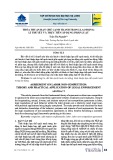




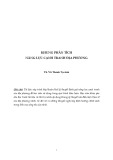

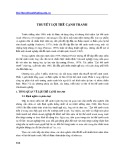
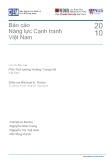
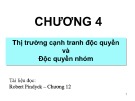
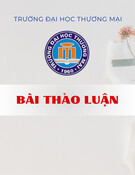

![Bài tập Kinh tế vi mô kèm đáp án [chuẩn nhất]](https://cdn.tailieu.vn/images/document/thumbnail/2025/20250923/thaovu2k5/135x160/19561758679224.jpg)

